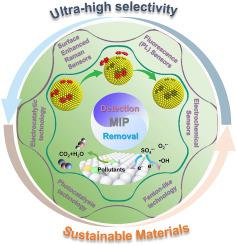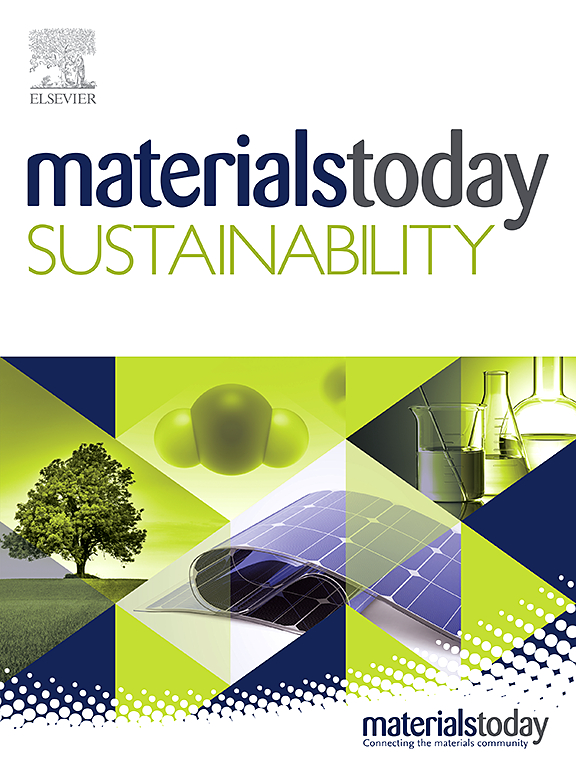Application of molecularly imprinted polymers in the water environmental field: A review on the detection and efficient removal of emerging contaminants
IF 7.1
3区 材料科学
Q1 GREEN & SUSTAINABLE SCIENCE & TECHNOLOGY
引用次数: 0
Abstract
The emerging contaminants in the environment pose a threat to ecological security and human health. At present, traditional technologies are difficult to detect and remove existing trace emerging contaminants in water bodies. Therefore, efficient removal of low concentration emerging contaminants is a key issue in ensuring water safety. As an emerging technology, molecular imprinting technology (MIT) can synthesize polymers with specific recognition ability for target pollutants, providing a new approach for efficient removal of emerging contaminants. It is worth noting that combining MIT with traditional catalysts is an effective method to improve detection limits and removal efficiency. This review mainly introduced the research progress of using MIT to detect pollutants in various sensors and using advanced oxidation technology to remove pollutants in recent years, focusing on the preparation and application of MIT-based photocatalysts, electrocatalysts, and Fenton-like catalysts. In addition, possible interactions between the target analyte and MIT were discussed, as well as the reusability and stability of imprinted catalysts in water treatment, and their potential ecological toxicity risks were analyzed. Finally, the challenges of MIT based pollutant mitigation and the application prospects of molecular imprinting technology in environmental analysis were elaborated from multiple perspectives.

分子印迹聚合物在水环境领域的应用:新出现污染物的检测和高效清除综述
环境中的新兴污染物对生态安全和人类健康构成威胁。目前,传统技术难以检测和去除水体中现有的痕量新兴污染物。因此,高效去除低浓度的新兴污染物是确保水安全的关键问题。作为一种新兴技术,分子印迹技术(MIT)可以合成对目标污染物具有特异性识别能力的聚合物,为高效去除新兴污染物提供了一种新方法。值得注意的是,将分子印迹技术与传统催化剂相结合是提高检测限和去除效率的有效方法。本综述主要介绍了近年来利用 MIT 在各种传感器中检测污染物以及利用高级氧化技术去除污染物的研究进展,重点介绍了基于 MIT 的光催化剂、电催化剂和类 Fenton 催化剂的制备与应用。此外,还讨论了目标分析物与 MIT 之间可能存在的相互作用,以及印迹催化剂在水处理中的可重复使用性和稳定性,并分析了其潜在的生态毒性风险。最后,从多个角度阐述了基于 MIT 的污染物减排挑战以及分子印迹技术在环境分析中的应用前景。
本文章由计算机程序翻译,如有差异,请以英文原文为准。
求助全文
约1分钟内获得全文
求助全文
来源期刊

Materials Today Sustainability
Multiple-
CiteScore
5.80
自引率
6.40%
发文量
174
审稿时长
32 days
期刊介绍:
Materials Today Sustainability is a multi-disciplinary journal covering all aspects of sustainability through materials science.
With a rapidly increasing population with growing demands, materials science has emerged as a critical discipline toward protecting of the environment and ensuring the long term survival of future generations.
 求助内容:
求助内容: 应助结果提醒方式:
应助结果提醒方式:


